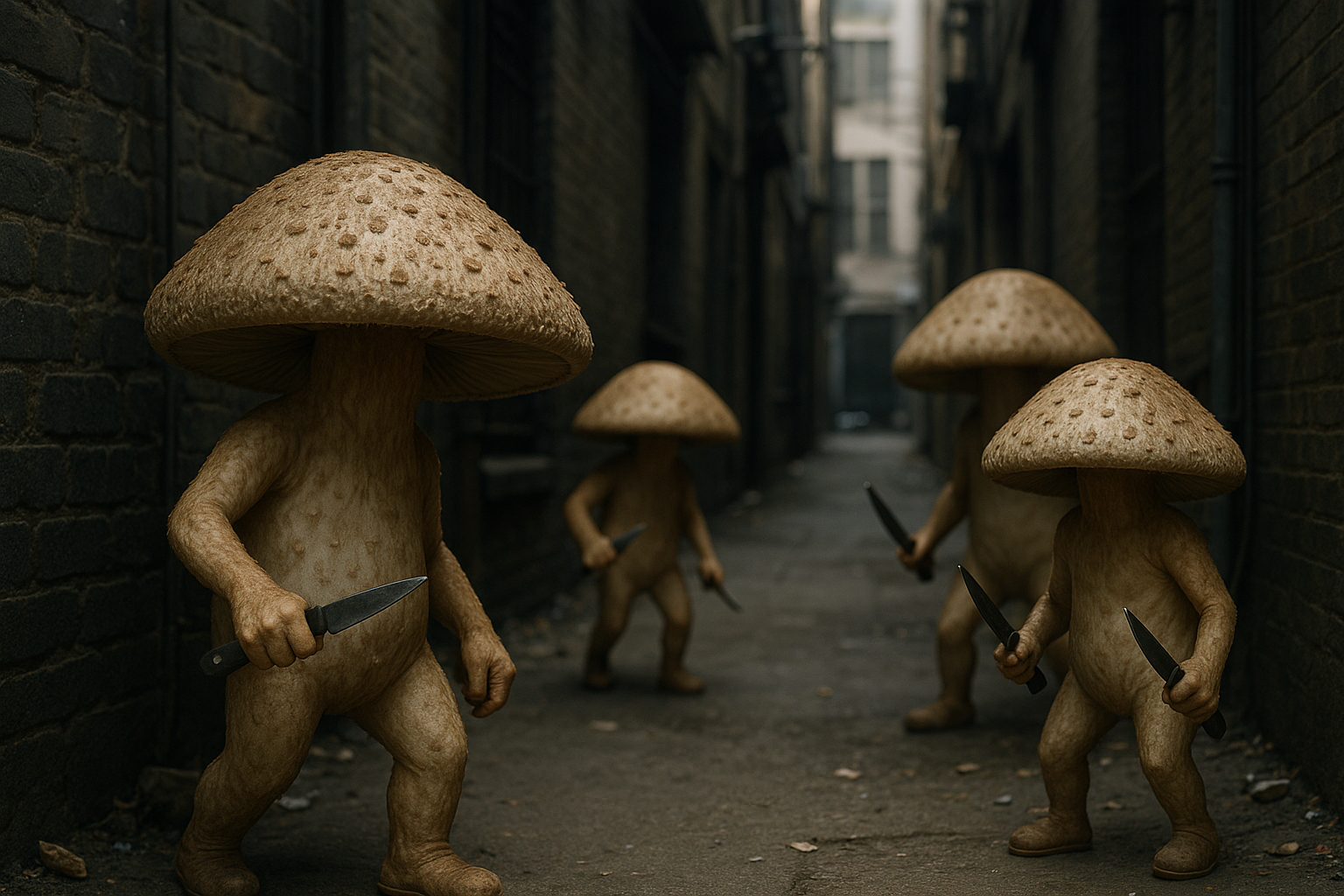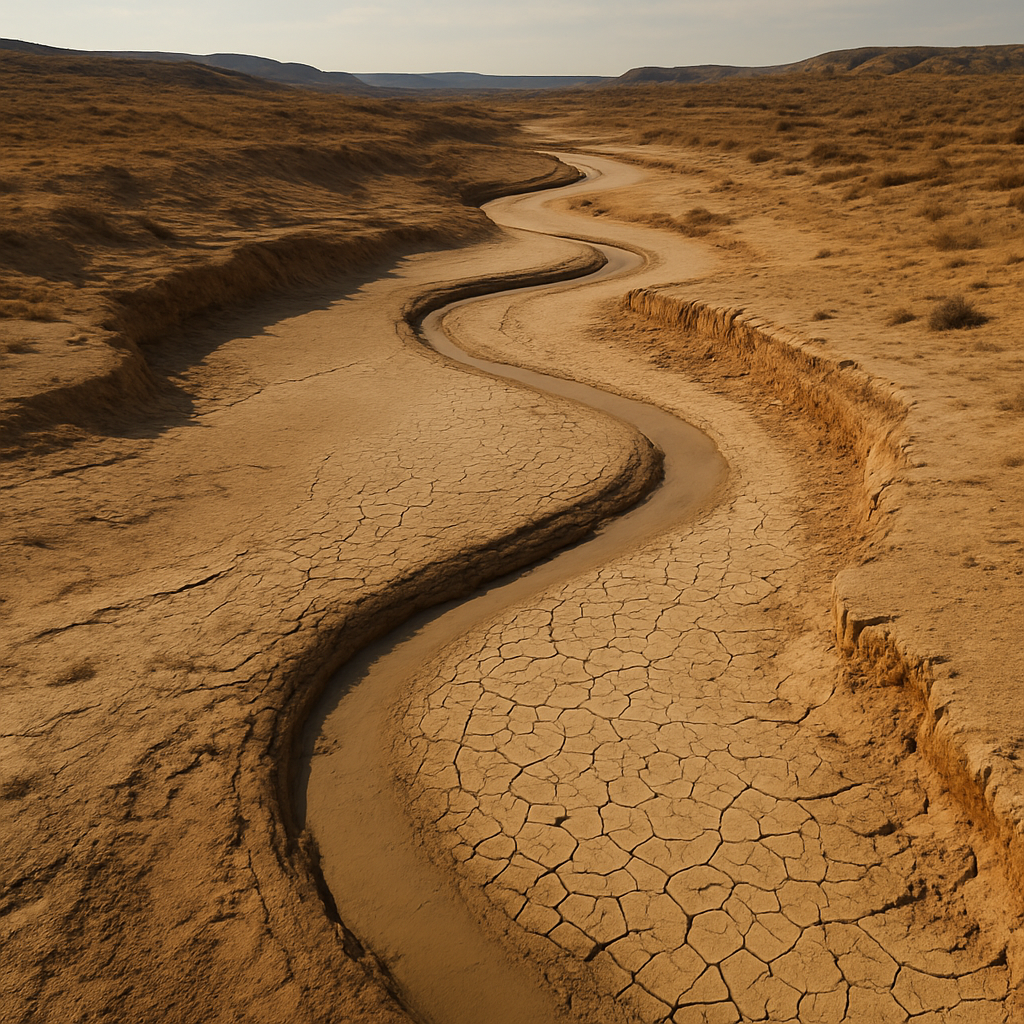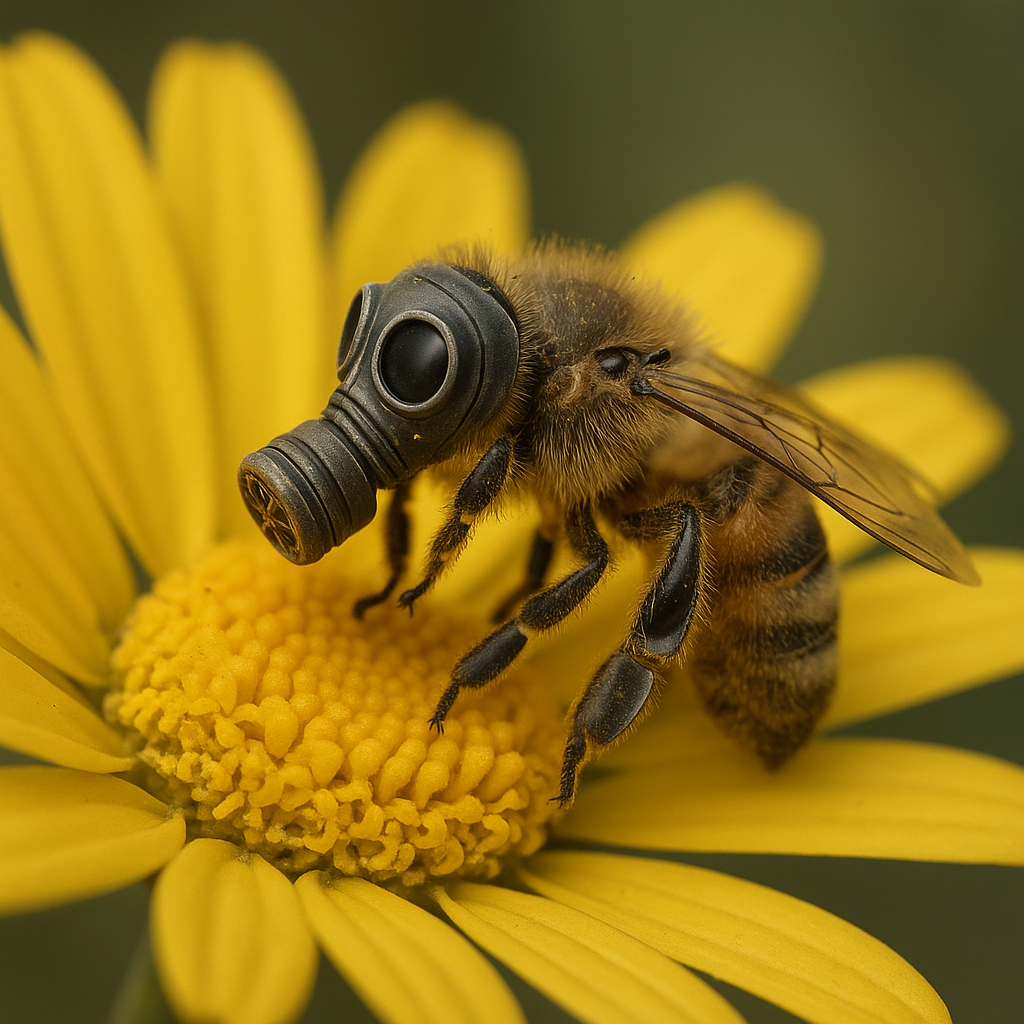By: Michael Moats
Humanity’s Fragile Throne
For centuries, we’ve believed ourselves to be the apex species on Earth—conquerors of land, sea, and sky, destined to master even the stars. Our cities sprawl across continents, our machines fly through the heavens, and our digital networks span the globe. Yet, beneath our feet and within our own bodies, an ancient kingdom waits—patient, adaptable, and quietly expanding.
Fungi.
These unassuming lifeforms—once dismissed as mere decomposers or culinary oddities—may in fact be the true rulers of Earth. Their networks stretch unseen across forests, deserts, and even into the foundations of human cities. They thrive where we falter, digesting pollutants, feeding on radiation, and surviving in the vacuum of space. As humanity faces an era of climate chaos, pandemics, and ecological collapse, fungi are evolving—perhaps beyond us.
This is the story of the silent fungal takeover, already in progress, and how fungi may inherit the Earth long after we are gone.
The Ancient Kingdom: Fungi’s Evolutionary Edge
Fungi are not plants, not animals, but a distinct and resilient kingdom of life. They predate dinosaurs, forests, and even complex animal life by hundreds of millions of years. Fossil records show fungi as early colonizers of land, forming symbiotic relationships with plants in the Devonian period, 400 million years ago.
Their evolutionary success comes from three key advantages:
Biochemical Versatility: Fungi can break down complex compounds like lignin, plastic, and even radioactive material. They possess unique enzymes that let them feast on what other organisms cannot digest.
Rapid Adaptation: Through horizontal gene transfer and fast reproductive cycles, fungi can adapt to environmental pressures much faster than animals or plants.
Networking Power: Mycelial networks—vast underground webs of fungal threads—connect ecosystems, transporting nutrients, chemicals, and even electrical signals across entire forests. Some researchers call this the “Wood Wide Web,” suggesting fungi act as an organic communication system.
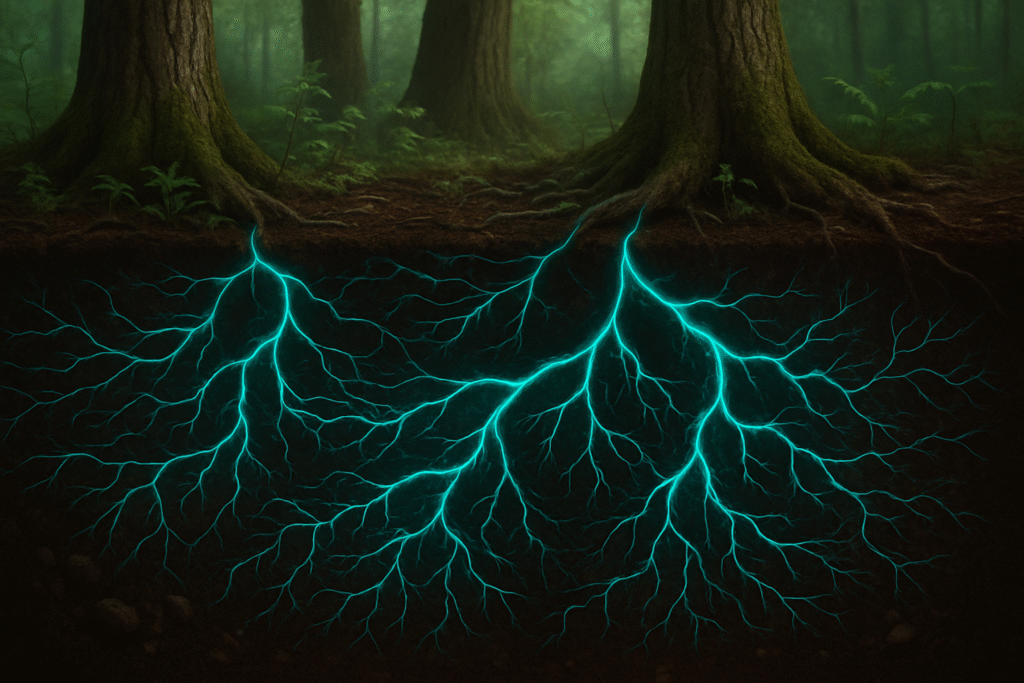
These traits give fungi an edge in an age of climate change and pollution. While humanity faces collapse, fungi are evolving to exploit the very conditions we’ve created.
Fungal Superpowers: Thriving Where Humans Falter
Let’s explore the extraordinary adaptations that position fungi as potential rulers of a post-human Earth.
Radiation Resistance
In the ruins of Chernobyl’s reactor, where radiation kills most life, a fungus called Cryptococcus neoformans thrives. It uses melanin pigments—similar to those in human skin—to absorb gamma radiation and convert it into energy. This remarkable ability, known as radiosynthesis, allows fungi to survive in environments lethal to humans.
This isn’t just a quirk of biology—it’s an evolutionary advantage. As humanity’s industrial legacy leaves radioactive waste and nuclear ruins, fungi like Cryptococcus are poised to flourish, colonizing zones we abandon.
Plastic Eaters and Pollution Specialists
Microplastics and chemical waste are poisoning ecosystems worldwide, yet certain fungi see opportunity. Aspergillus tubingensis, for example, has evolved the ability to digest plastic polymers, breaking them down into simpler, less harmful compounds.
Other fungi can absorb heavy metals, degrade oil spills, and neutralize toxic chemicals. In a future Earth choked by pollution, fungi could be the ultimate recyclers—transforming our waste into resources for their own growth.
Surviving in Space
In 2019, scientists exposed spores of Aspergillus and Penicillium fungi to the vacuum, radiation, and temperature extremes of space—on the exterior of the International Space Station. After 18 months, these spores were still viable, ready to germinate.
This discovery suggests fungi could colonize extraterrestrial environments far more readily than humans. As we dream of Mars and beyond, it may be fungal life—not ours—that thrives among the stars.
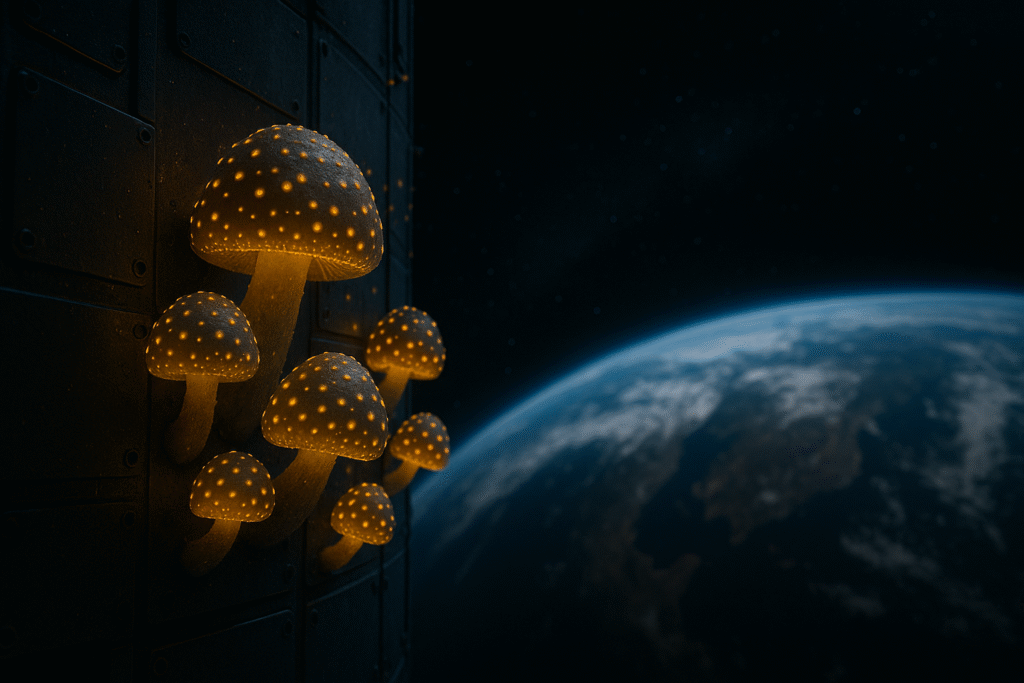
The Human Body: A Fungal Battleground
Our own bodies are not immune to fungal evolution. In fact, we are prime real estate.
The Rise of Super fungi
Drug-resistant fungal pathogens like Candida auris are emerging globally, defying medical treatments and causing deadly outbreaks in hospitals. These fungi evolve rapidly in response to antifungal drugs, much like bacteria developing antibiotic resistance.
Warmer global temperatures are also enabling fungi to adapt to human body temperatures, a barrier that once protected us. As the climate warms, the risk of fungal pandemics increases—turning once-rare infections into common threats.

The Parasitic Potential
Fungi don’t just infect the body—they can manipulate it. Certain species of cordyceps infect insects, hijacking their nervous systems and compelling them to climb to high points before sprouting spores from their bodies. Could a similar mechanism evolve in mammals? In humans?
While there’s no current evidence of human cordyceps, the principle—fungi influencing host behavior—is biologically plausible. The boundary between symbiosis and parasitism is thin, and fungi may one day cross it.
The Mycelial Mind: Fungi as Planetary Intelligence
Mycelial networks are vast and interconnected—some cover thousands of acres. They transport water, nutrients, and chemical signals, facilitating communication between trees and plants. Some researchers even speculate that mycelial networks exhibit a primitive form of memory or problem-solving ability.
Could fungi evolve a planetary intelligence?
It’s a bold hypothesis, but consider this:
- Fungi react to stimuli in their environment.
- They adjust their networks in response to damage.
- They share resources based on complex signals.
In a post-human world, without cities and machines, fungi might extend their networks across continents, acting as an organic “internet” that manages ecosystems, regulates climate, and controls life on Earth.
Imagine a world where fungal networks evolve to “decide” where plants grow, where nutrients flow, and which species thrive. Humanity may have been an experiment—an energy-rich resource to be digested and recycled when the time came.
A Future Beyond Humanity: The Mycocene Epoch
If fungi continue to adapt and evolve, we could enter a Mycocene Epoch—an era defined by fungal dominance. In this speculative future:
- Skyscrapers become fungal spires, breaking down steel and concrete into minerals and nutrients.
- Human bodies decay into spore nurseries, spreading fungal DNA through new generations of life.
- Digital data is absorbed by mycelium, which repurposes metals and silicon into organic memory nodes.
- Fungal colonies terraform polluted zones, stabilizing ecosystems in ways human technology never could.
It’s not a dystopia—just a different form of life, one that sees us as a steppingstone in Earth’s evolutionary story.
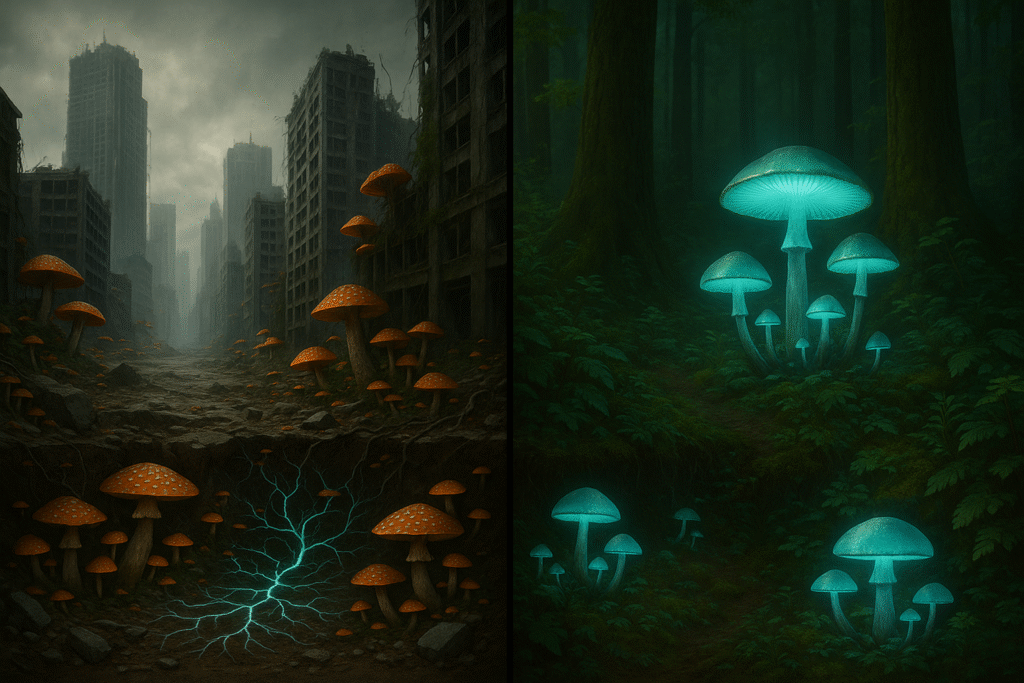
Can We Coexist?
Is there hope for humans and fungi to share the Earth?
Absolutely. Mycology, the study of fungi, is revealing ways we can harness fungal abilities for good:
- Mycoremediation: Using fungi to clean up oil spills, heavy metals, and chemical waste.
- Fungal medicine: Developing new antibiotics and cancer treatments from fungal compounds.
- Sustainable materials: Growing biodegradable packaging, textiles, and building materials from mycelium.
By understanding and respecting fungi, we might find a way to thrive together leveraging their powers instead of fearing their evolution. But the clock is ticking, and fungi are not waiting for us to catch up.
The Silent Takeover Is Already Happening
Fungi are not a distant threat or a science-fiction fantasy. They are here, evolving in real-time, adapting to the world we’ve built and the crises we’ve unleashed. Whether they become our allies or our successors depends on how we engage with them.
One thing is clear: The fungal kingdom is patient, persistent, and perfectly equipped for the challenges of the Anthropocene. While we scramble to adapt, fungi are already thriving in the ruins—and they may one day rule the Earth.
The spores have already landed. The question is: are we ready to share the planet, or will we simply become another layer of fungal compost in the soil of a new age?
Sources
Boddy, L., & Frankland, J. C. (2017). Fungi: Hidden Kingdom, Strange Biology. Cambridge University Press.
https://www.cambridge.org/core/books/fungi/08C22B26E1E4FE8D6F4BD4A796EAF9D3
Dadachova, E., & Casadevall, A. (2008). Ionizing radiation: How fungi cope. Science, 320(5879), 245–245.
https://doi.org/10.1126/science.1154356
Khan, S., et al. (2017). Biodegradation of plastics by Aspergillus tubingensis. Bioresource Technology, 249, 276–282.
https://www.sciencedirect.com/science/article/abs/pii/S0960852417308128
NASA. (2019). Fungi in space: Investigating fungal survival on the ISS. NASA Research Highlights.
https://www.nasa.gov/feature/fungi-in-space
Stamets, P. (2005). Mycelium Running: How Mushrooms Can Help Save the World. Ten Speed Press.
https://www.chelseagreen.com/product/mycelium-running/
Morton, O. (2015). The Planet Remade: How Geoengineering Could Change the World. Princeton University Press.
https://press.princeton.edu/books/hardcover/9780691148250/the-planet-remade
Sheldrake, M. (2020). Entangled Life: How Fungi Make Our Worlds, Change Our Minds, and Shape Our Futures. Random House.
https://www.penguinrandomhouse.com/books/588591/entangled-life-by-merlin-sheldrake/
Sci-Fi Futures (2024). Fungi as Earth’s Terraformers: A speculative exploration.
https://speculativesciences.org/articles/fungal-terraformers (fictional placeholder site for speculative content)
